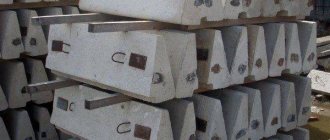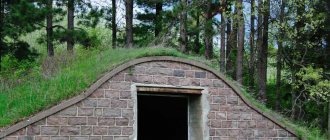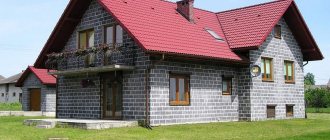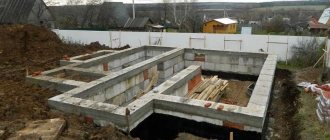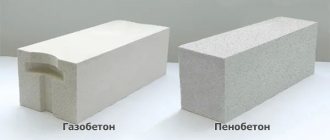Dirt roads, or primers, are natural or artificial surfaces that are not designed for high loads. They do not require frequent maintenance, but also do not have high throughput. Such roads can be found outside cities, in forests and fields, in villages and villages.
At the Gruntovozov company you can buy crushed stone for dirt roads with delivery to your site at the lowest price.
Price for crushed stone for dirt roads from 490 rubles. for 1m3 Order
The term “dirt roads” itself means that they are made of natural materials. Often they even form naturally - someone simply trampled a path, then cars started driving along it, a rut appeared - and a road appeared. But it also happens that they are equipped intentionally, using imported soil (including crushed stone).
We will talk about how crushed stone is used for dirt roads, and what types of it are suitable for this, in this article.
But first, let’s say that all dirt roads can be divided into several types:
- Temporary roads
- Regular dirt roads
Now let's look at each type in more detail and tell you how crushed stone is used to create these roads.
Construction of a temporary road made of crushed stone
The purpose of constructing a temporary road is to ensure the passage of large equipment to the construction site at minimal cost and in a short time. But it will be difficult for passenger cars to move on such a surface. And the road will not last long - only one or two seasons.
The technology for constructing a temporary canvas is extremely simple: just pour coarse material over the ground in an even layer and then compact it. Therefore, it all comes down to the choice of backfill.
Crushed stone of a large fraction is suitable for this. If only dump trucks will be moving on the road, feel free to take grains of size 40-120 or 80-120. Such large stones will be inconvenient for cars to pass through. In this case, a fraction of 40-70 should be used. To extend the life of the road, it is sometimes covered with asphalt cuttings. But this will greatly increase the cost, and it will be easier to equip a full-fledged ground cover.
If you just need to have a temporary entrance for dump trucks, choose the cheapest materials - broken bricks, concrete and other solid waste.
If there are brick or concrete factories near you, it makes sense to go there. These enterprises sell production waste – defective products – at a low price. It is inexpensive, but you will also have to organize pickup.
There is a cheaper option. When demolishing old buildings, a lot of construction waste is generated: fragments of floor slabs, pieces of plaster, slate, ceramic tiles, crushed concrete from the foundation or screed, and so on. All this must be recycled. You can negotiate and pick up these materials for free or almost free. You will have to pay some money for delivery to your site, but it will still be much cheaper than buying crushed stone or asphalt chips.
Temporary roads have a number of disadvantages:
- Not suitable for passenger car traffic
- Doesn't last long
- In swampy areas they can go into the ground
- During prolonged downpours, they can sink into the ground if equipment moves over them.
Method 3: road slabs
These are ready-made reinforced concrete products. They are produced in different sizes, so the price depends on this. For example, 2P 30.15-10 has dimensions of 3000×1500×160 mm and costs approximately 6-6500 rubles. It’s a bit expensive, but this type of slab covering has a number of advantages:
- 1) Vehicles of any weight can drive on the road without damage;
- 2) The canvas does not blur;
- 3) When laid correctly, the slabs do not break.
If it is planned to build a road to a site of short length, this option is optimal. The cost of 1 meter, based on the slab we chose, is about 4 thousand rubles.
Before laying the slabs, the soil is cut off, compacted, covered with geotextiles and sand, then with crushed stone. Such a cushion will take on the loads and distribute them over the entire surface of the slab, preventing it from breaking.
Construction of a dirt road made of crushed stone
If you plan to arrange the entrance to your site for regular use, then a temporary road will not be enough. In such a situation, a solid foundation is required that will not crumble over time and will withstand the necessary loads.
The technology for creating a road consists of several stages:
- Soil removal
- Pillow device
- Road base equipment
- Filling the top layer
- Rasklintsovka
Depending on your budget and road requirements, the technology can be simplified or complicated.
We will look at several typical ways to create such a coating.
Single layer road without cushion
It is not much different from a temporary entrance. But in order to extend the service life of the coating, a base is made underneath it.
Here are the materials you will need:
- Crushed stone fraction 40-70
- Large construction waste (broken bricks, concrete, etc.) – optional
Work order:
- Dig a trench 2 meters wide and about 30 centimeters deep at the site of the future road.
- Fill the trench with crushed stone so that its layer rises 5-10 centimeters above the ground level
- If you want to save money, add construction waste along with crushed stone.
- Compact the covering
The road is ready.
Let's say right away that this coating will not last long. Over time, the crushed stone can be pressed down and go into the ground. This will cause unevenness and holes to appear on the surface; they will have to be constantly filled in. This is especially true for areas with weak foundations (for example, located above an underground river or in swampy areas).
Single layer road with cushion
Everything is the same, but in this case sand is poured under the crushed stone layer. It plays the role of a “cushion” - it prevents the top layers from shrinking and deforming the road surface.
You will need:
- Sand
- Crushed stone fraction 40-70
- Asphalt cutting is optional
Work order:
- Dig a trench of the same dimensions as in the previous case
- Fill the bottom of the trench with sand so that the floor has a layer of about 20 centimeters
- Pack the pillow
- Fill the next layer with crushed stone so that it rises 5-10 centimeters above the trench
- Compact the covering
- To increase wear resistance, lay asphalt cuttings on top and compact it too
Such a road is suitable for entering the site, but on the condition that the car will only drive along it and not park. Otherwise, it will wash out.
Multi-layer road with cushion
Technologically, the design of such a coating differs only in that a top layer is added. This allows for additional strength. The road will be resistant to stress and will serve you for decades.
You will need:
- Sand
- Crushed stone fraction 40-70 (you can use broken brick or concrete)
- Crushed stone fraction 20-40
- Instead of these two fractions, you can use one - 20-70 or 20-80
- Crushed stone fractions 5-10, 5-20 or 5-25
- Asphalt cutting is optional
Work order:
- Dig a trench (width 2 meters, depth 30 centimeters)
- Compact the bottom of the trench well
- Lay sand on the bottom in a layer of 15-20 centimeters
- Compact the sand
- Fill the bottom layer of crushed stone 40-70 with a height of 10-20 centimeters
- Compact the layer
- Fill in crushed stone 20-40 (about 5 centimeters in height). If you use a fraction of 20-70 or 20-80, then you do not need to perform steps 5 and 6 - instead, in the seventh step, fill in only crushed stone 20-70 or 20-80 in a layer of 15-25 centimeters
- Perform declumping with a fraction of 5-10, 5-20 or 5-25. If you used the fraction 20-70 or 20-80, you do not need to complete this step
- Seal the coating
- If desired, you can lay a layer of asphalt cuttings on top, and then repeat the compaction
The resulting road will not fail or wash out, and cars can be parked on it. Even a small truck driving over such a surface will not damage it.
Now that you know the technology for constructing primers, we will talk about the requirements for crushed stone to create them.
Preparatory work and route marking
Before building a new road , we need to lay out the optimal route for it. In most cases, you will need to obtain permission for its construction from local authorities. We will not dwell on this topic in detail and will assume that we already have it. The route should be kept as straight as possible, avoiding high hills and wet lowlands. This approach will save considerable money on road construction.
Now we need to decide on the width of the future road. In most cases, a dirt country road is built as a single-lane road for travel in one direction only. For passing vehicles, small areas are arranged at a distance of 200 - 300 meters between them. The width of the embankment of such a road at the top of the pie is usually from 3 to 4 meters. It is important to take into account the following point - the wider the road, the more stable the road surface. The width of a roadside ditch usually does not exceed one meter. Between the ditch and the embankment there must be a shoulder at least a meter wide.
Along the laid route of the future road, it is necessary to excavate fertile soil, that is, to form a base for an embankment and clear space for future roadside ditches. If we are building a road with a road surface width of 3.5 meters, then the fertile soil layer must be removed in a strip of at least 7.5 m. Or better yet, all 8 meters. All collected fertile soil should be transferred to your garden. For this work you will need an excavator with a wide bucket and a dump truck.
It is necessary to think over a scheme for draining water from roadside ditches and provide the necessary slopes for them. If water stagnates in the ditch for a long time, this will contribute to water erosion of the roadway. If necessary, water can be drained from such places by laying a pipe even under a road embankment. This is usually necessary when a section of the road passes along a slope. In this case, only one ditch is installed on the side of the hill.
What crushed stone is needed for dirt roads
Here, first of all, you should pay attention to the grain size of the material and the rock.
The best choice would be the following varieties:
- For the construction of temporary roads - amphibolite crushed stone 40-120 or gabbro crushed stone 80-120. This is if you plan to arrange a passage for heavy equipment. And for passenger cars, the 40-70 fraction of granite and serpentinite is suitable. You can also use marble 40-70, but it has very low strength and frost resistance.
- For the construction of single-layer roads or backfilling of the lower layer - granite or serpentinite crushed stone of fraction 40-70. Despite the presence of the same marble fraction, it is better not to use it due to its low characteristics.
- For the upper layers of the road - granite, amphibolite, serpentinite and diorite varieties of fraction 20-40. All these materials have high strength and frost resistance. Very rarely, in order to save money, they buy 20-40 marble, but its performance is significantly lower.
- For decluttering - crushed gabbro 5-10, as well as a fraction of 5-20 from diorite and limestone or granite crushed stone 5-25.
- As a combination of fractions 20-40 and 5-10, 5-20 or 5-25 - crushed granite stone 20-70 or crushed gabbro 20-80.
- For the repair of dirt roads - crushed stone fractions 20-40, 20-70 and 40-70 from granite, gabbro 20-80, amphibolite fraction 20-40, diorite 20-40, serpentinite 20-40 and 40-70, limestone 20-40 , as well as marble crushed stone 20-40 or 40-70.
By following the links, you can read more about these varieties, as well as buy any of them.
Maps of Latvia in Russian: roads, cities and…
Map of Latvia in Russian. Detailed map of roads, cities and resorts on the interactive satellite map of Latvia.
I want to fill with crushed stone a small section of the country road that runs past the house.
The road is full of potholes, is it necessary to first fill them with something and smooth out the road a little? Or will it be enough to properly level the crushed stone? If necessary, what is better than Anatoly?
Nikita level-compact-fill with crushed stone-compact and asphalt
Gennady, do not forget to compact it with a vibrator after backfilling.
Artem The ideal option is to fill the potholes with crushed stone, then sand over the entire area, then crushed stone over the entire area.
Dmitry sand and small pebbles, compacted and then crushed stone
Nikolay, first with stone and earth, then with crushed stone
Arthur, you can do it right, it can be simpler, and you can get away with it in each case, a different technology
Anton You need to level the base with sand, at least 10 cm, then crushed stone, the covering is asphalt concrete. If crushed stone is placed on the ground, the water does not drain away.
Basic principles when choosing
Regardless of the tasks, crushed stone must be selected in accordance with certain principles and rules:
- clearly define the purpose of crushed stone and the necessary characteristics for the implementation of the project, note the main properties;
- get acquainted with the variety of types and fractions, highlight several options;
- when implementing important tasks, it is important not to skimp on consumables;
- it is necessary to strictly follow the recommendations for arranging the coating;
- It is recommended to carry out work in favorable weather conditions.
Who should organize all this work?
A large number of construction companies offer for rent the necessary special equipment for strengthening roads. But the downtime of renting special equipment is often not enough for full-fledged work. There is a need for proper organization of work. It is necessary to select the correct number of units of each special equipment so that all equipment works with maximum efficiency and does not stand idle.
Our company not only rents out the necessary special equipment, we take upon ourselves the complete organization of all work. In addition, we cooperate with large construction and road organizations, from whom we can obtain the necessary large waste for road filling.
Source
Sand and crushed stone - salvation from the spring thaw
Proper construction of a reliable dirt road should be done as follows:
Another option for road surfaces is sand and gravel mixture (SGM). You can find such roads today in almost any cottage village. The main advantage of ASG coating is simplicity and high speed of construction.
Well, the best solution for a dirt road is layer-by-layer filling with sand and crushed stone. In this case, the coating receives natural drainage and has increased strength and durability. Suitable for both passenger cars and trucks.
Concrete fight
Reinforced concrete waste after the destruction of various buildings is large and unsuitable for use due to its dimensions. They are subsequently crushed using special mechanisms to achieve relatively uniform sizes. They are often mixed with construction waste, bricks, and earth. Therefore, without additional cleaning it is not suitable for use; the price of such crushed concrete is low.
Recycling of broken concrete consists of its processing, cleaning, crushing into a homogeneous fraction and further sale. Simply put, materials are given a second life, a second chance to serve people. The final product is concrete crushed stone, which has high strength and hygroscopicity characteristics. Crushed concrete can be used to further lay asphalt on it.
Concrete crushed stone is not made from expanded clay blocks, foam concrete, cinder blocks - such material crumbles and cannot withstand high loads.
How are land plots classified?
The procedure for raising the earth with your own hands depends on the type of site.
They are divided based on the landscape and features of the geological structure:
- Above sea level. They are located mainly in the mountains and on natural plains. The areas are characterized by frequent precipitation and low temperatures. The type of soil is different; before raising the land, geological studies are carried out.
- Below. They are located in lowlands and swamps. The nature of the soil varies, some are fertile. If it is decided to build a building so that it does not flood, the earth is raised.
- Above ground level. It has bumpy terrain and depressions that make processing difficult. The deficiency will be corrected by raising.
- Below. It is located in lowlands where water flows. To prevent the formation of a swamp, the territory is filled.
For leveling, crushed stone, clay, sand and other material are used.


